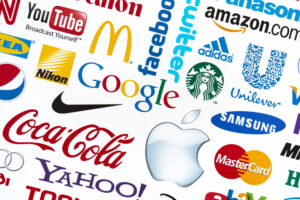 Your star of branding is your logo and its unique hue or colors. That’s right, your branding colors. However, your visual position is the cornerstone of how customers perceive your brand, and they have strong opinions about, well, everything.
Your star of branding is your logo and its unique hue or colors. That’s right, your branding colors. However, your visual position is the cornerstone of how customers perceive your brand, and they have strong opinions about, well, everything.
Your unique color system may vary a few shades depending on where it appears, but you want it to represent your brand in the best possible way. Your customers must still understand your mission and the message you are sharing. But what do your customers think when branding colors vary?
Every Color Has Representation on Every Media
For your branding colors, your logo designer should always tell you the CMYK and RGB colors or Pantone colors before handing over the official files that say “This is who we are” to the world. Once uploaded, shared and reshared, a logo becomes a part of a customer’s conscious. They subconsciously pick up on the commercials and ads, even when they are busy, and too much variation in color across media and platforms might make their eyes twitch.
Expect a little variation, though. Different processes and types of printers are used for print media, be it for t-shirts or brochures. Monitors differ in brightness for each household. It’s critical with branding colors.
How color translates on paper will vary from how it comes across on the screen. Ask your designer about complementary typefaces and colors now before you have to put something together that frightens your audience away haphazardly. Compatibility and consistency are critical factors in maintaining a solid brand representation across platforms.
Website Design, SEO and Branding Colors
Does branding color matter when it comes to website design, SEO, and conversion rates? Yes and no.
Many SEO experts will tell you that a proper website lends itself to indexing. Do anything you can so people can discover you. However, readability and visual hierarchy (easy to scan) are essential to successful website creation and customer conversion. Your customer has to be able to read and interpret your message, and they can’t do that if every word is highlighter yellow. Again, branding colors.
Color still communicates its message. Your brand is known for specific colors, yet you want a scannable and legible website. How do you scale up or down while staying true to your brand color and its message? Aqua blue is more tropical and fun than the professional and somber mood of navy blue.
Be careful with “simple” black, gray, and whites. White on black is too hard to read, and low contrasting gray on white will make your almost-lead click away in terror or boredom.
Print Design and Branding Colors
Go back to the example of printing t-shirts vs. brochures. Different types of presses handle each promotional product. A matte cotton t-shirt will look different than a glossy brochure — how a product reflects light also matters to the eye.
CMYK (cyan, magenta, yellow and black in print) maintains a smaller color gamut than RGB (red, green and blue on the web). So, with CMYK it’s nearly impossible to print very bright green, blue or red colors. You have to make do with close complements.
Don’t Do What Coca-Cola Did: Just Trust Us
In one example of branding colors being an issue.
The iconic Coca-Cola red itself is made of three different shades of red-based old shipment barrels the bottles used to come in to tell them apart from barrels of alcohol.
Then came the issue. One day, Coca-Cola decided to release Coca-Cola Life and switched to green to reflect its new, natural look. Bottles were ripped off the shelves in the UK, not due to happy customers. The customers didn’t like it one bit. They got twitchy. In the US, those green labels didn’t fare so well, either. So, Coca-Cola goes with its traditional red.
Don’t do what Coca-Cola did. Just trust us.
